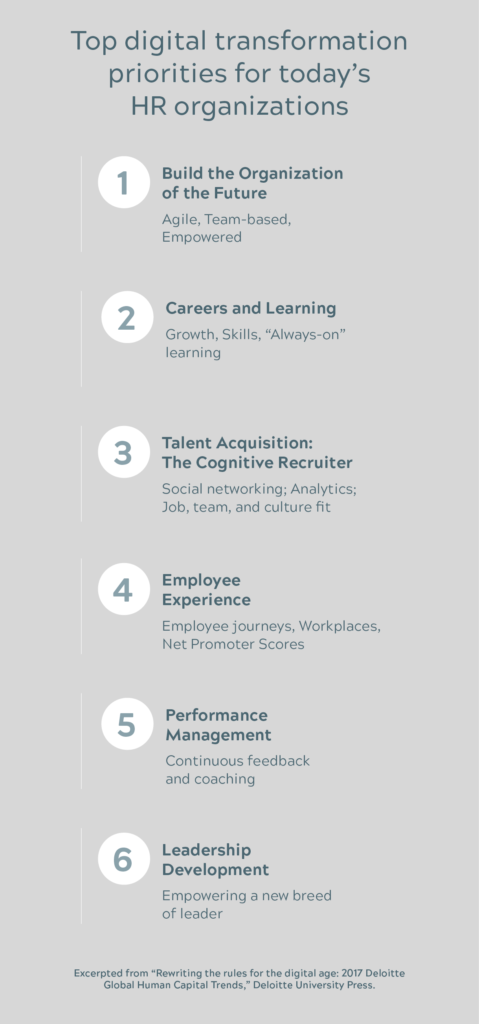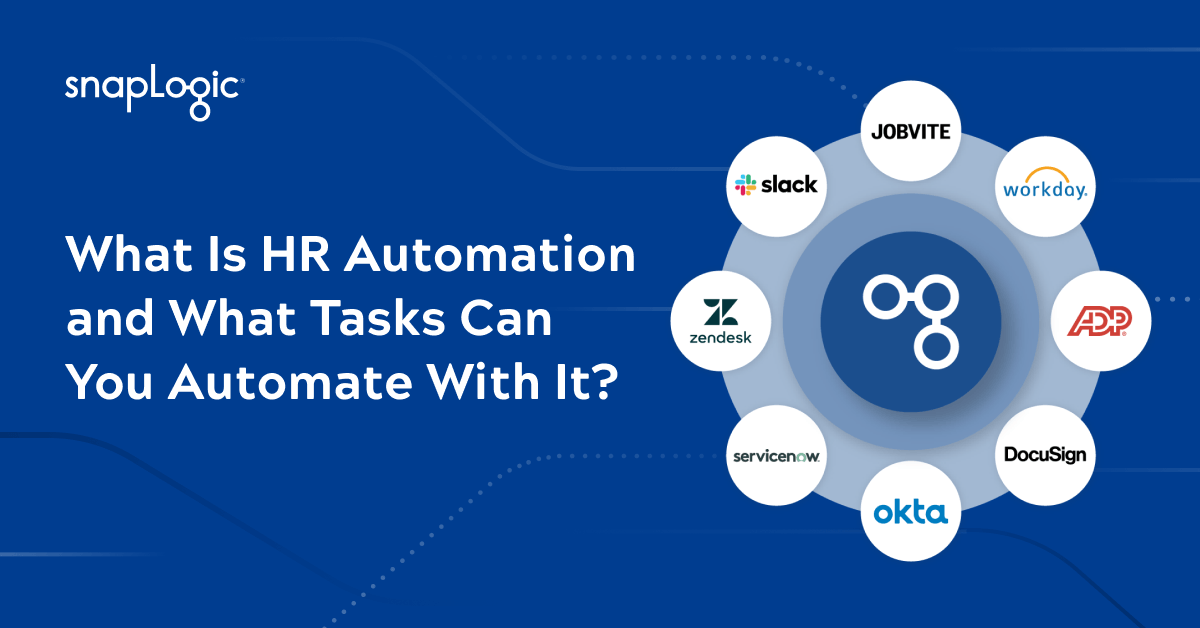Digital transformation has been a hot topic in business circles for well over five years, enveloping every industry and seeping into every corner of the enterprise. Beyond the excitement over its potential, digital transformation remains top of mind for a decidedly unexciting reason: it’s hard to execute and operationalize.
Where should HR organizations start in their quest to gain “disruptive, real-time intelligence?” How can digital transformation be operationalized? In its analysis of 2017 trends in human capital management, the consulting firm Deloitte offers a broad list of ten human capital trends, from “building the organization of the future” to “leadership disrupted.”
Six places to focus
Disruptive, real-time intelligence requires fast access to necessary data. In taking a closer look at the trends Deloitte identifies, six priorities emerge that stand to deliver the most business benefits from data-driven transformation.
Integrate data, not systems
So, how can an HR professional improve the number of qualified candidates or increase its employees’ skillset? As discussed in my recent blog post, the number-one challenge HR organizations face when trying to digitally transform themselves is the access to data itself. However, digital business cannot be operationalized on top of old, monolithic legacy applications. Real digital transformation requires transitioning legacy systems with new cloud-based systems. Unfortunately, this is an expensive, drawn-out strategic imperative that must be driven by IT, not HR.
HR organizations instead should focus, right now, on integrating data, not systems. New cloud-based systems will eventually create new cloud data silos, thus shifting the problem of integrating systems from on-premises to the cloud. Instead, HR organizations can take steps today to get the right data out of such cloud silos, into the right analytics solutions, to get relevant information at the right time to make the right decisions.
In my view, it’s not system renovation that’s holding back HR digital transformation. It’s HR data that is inaccurate, inconsistent, hard to access, and distributed across multiple data and application silos. Therefore, the first step toward digitally transforming HR is data integration.
Don’t depend on IT anymore
As complex as it may sound, data integration should not intimidate HR professionals. It’s your data and you understand it well – it’s just scattered across multiple silos. Today’s integration platform offerings are adept at connecting cloud silos together. You’ll need to pick an integration platform that enables “citizen integrators” such as line of business (LOB) managers and business analysts to quickly and visually take data from one application and connect it with another to obtain the insights needed. Fortunately, you don’t need to wait for IT to do this for you – HR professionals can be empowered to make well-informed decisions right now.
SnapLogic’s new white paper, “Data-driven: Disrupting the HR organization of the future,” explores the technology realities hampering HR organizations as they strive to transform into a more data-driven, analytic function. It also presents data integration solutions from SnapLogic as a key enabler of Digital HR, allowing HR professionals to easily access and integrate data from legacy and newer systems, without IT intervention. Download it here.












